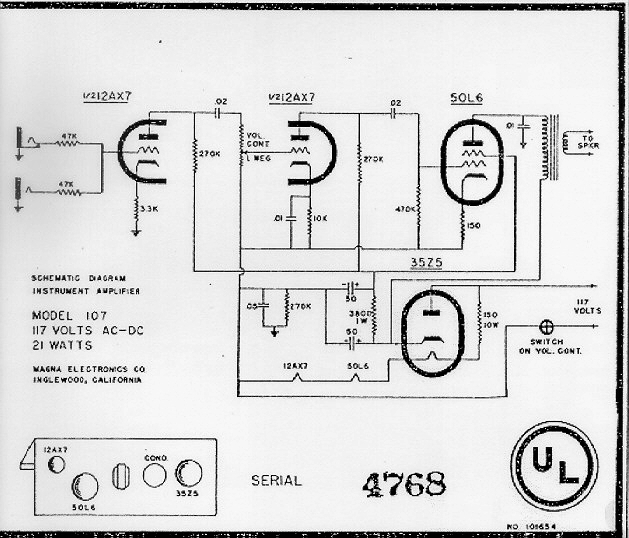I've never added an isolation transformer to an older amp myself so I am asking the amp techs here to post suggestions and tips on how to do it, with sources of parts if at all possible and explaining how to make a standalone box as well as adding the isolation transformer internally.
I will be moderating this thread and deleting posts that do not help explain how it is done and possibly editing others for brevity. The thread will be closed once the procedure has been explained.
Thanks in advance for your help in this!
Steve Ahola
P.S. I started this thread because one in the Guitar Amp section got really weird so I had to close it:
How do I make this 'widowmaker' safe?
The original question had to do with this schematic for a Magnatone amp:
http://music-electronics-forum.com/a...7-scarlett.pdf

I will be moderating this thread and deleting posts that do not help explain how it is done and possibly editing others for brevity. The thread will be closed once the procedure has been explained.
Thanks in advance for your help in this!
Steve Ahola
P.S. I started this thread because one in the Guitar Amp section got really weird so I had to close it:
How do I make this 'widowmaker' safe?
The original question had to do with this schematic for a Magnatone amp:
http://music-electronics-forum.com/a...7-scarlett.pdf


 ). A 1/2 amp fuse would be good for around 60 watts, a 1/4 amp would be good for about 30. Use slow-blow fuses. If you can get them, I would try the 1/4 amp with volume at loudest setting you will be using. If it blows, try the 1/2 amp.
). A 1/2 amp fuse would be good for around 60 watts, a 1/4 amp would be good for about 30. Use slow-blow fuses. If you can get them, I would try the 1/4 amp with volume at loudest setting you will be using. If it blows, try the 1/2 amp.
Comment